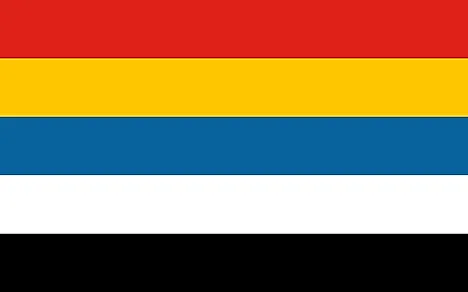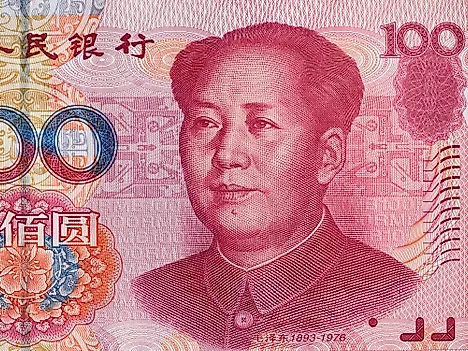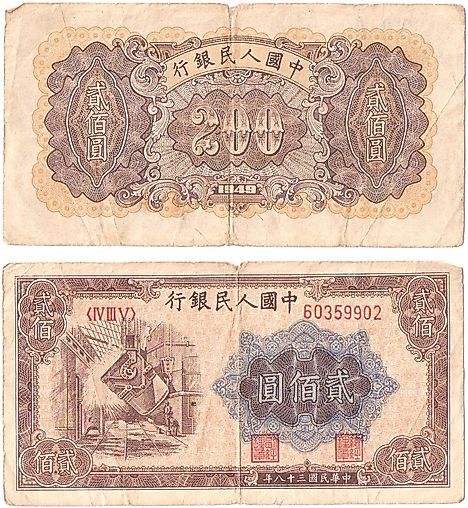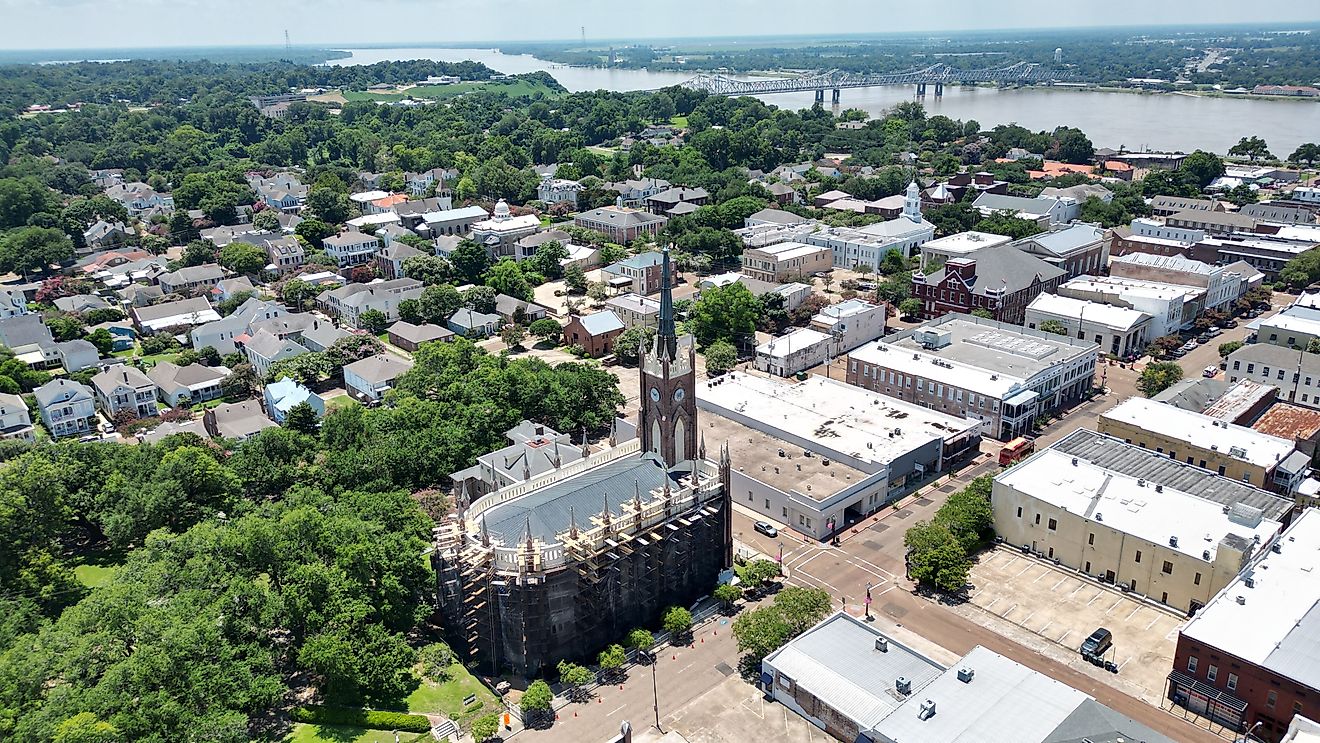Flags, Symbols & Currency of China
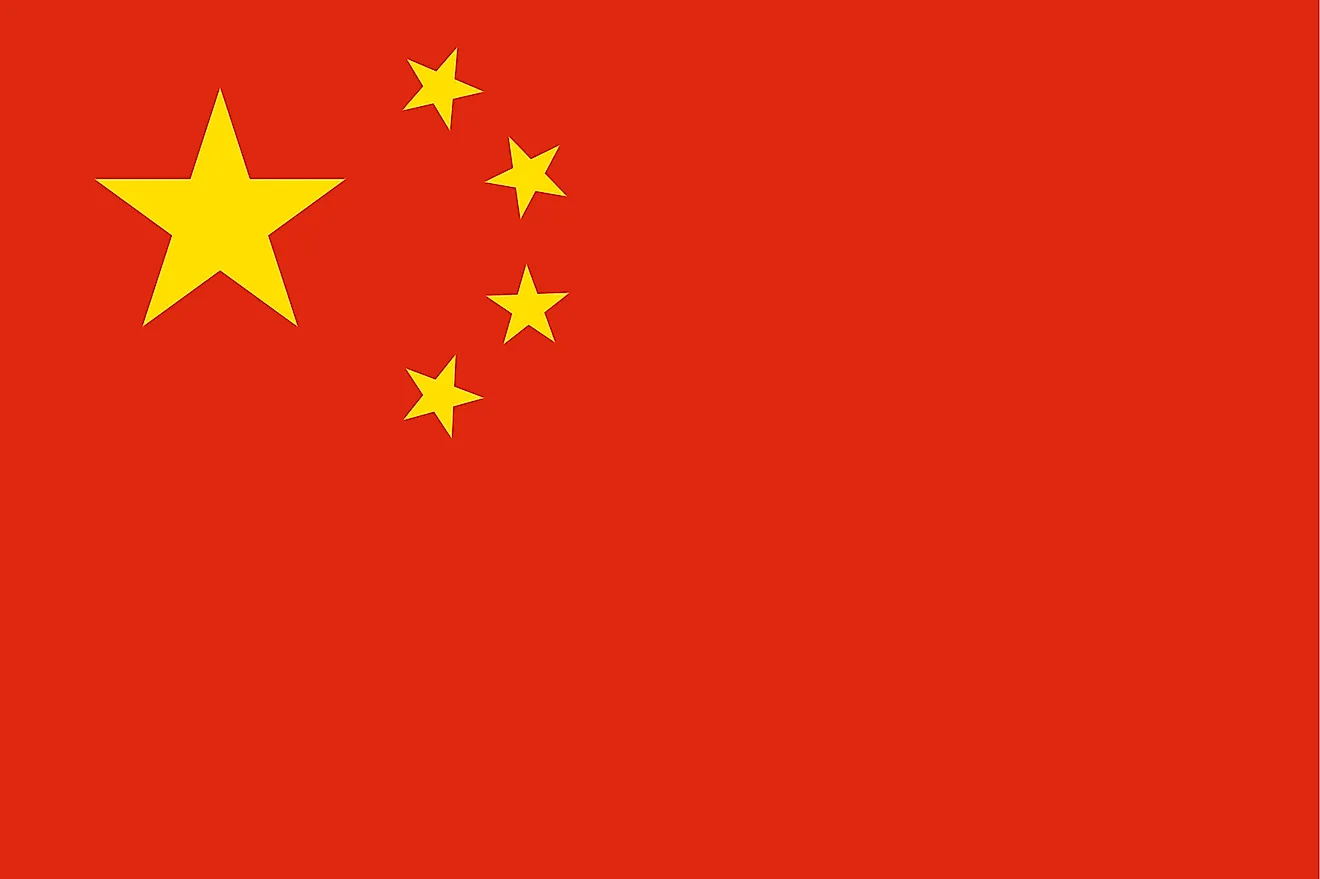
The National Flag of the People’s Republic of China was officially adopted on October 1, 1949. The flag was designed by Zeng Liansong. The flag is mainly used in the territories of Mainland China, Macau, and Hong Kong.
The National Flag of the People’s Republic of China (“Five-star Red Flag”) features a red background with a large yellow five-pointed star and four smaller yellow five-pointed stars (arranged in a vertical arc toward the middle of the flag) in the upper hoist-side corner. The red color of the Chinese flag symbolizes the Communist Revolution and the blood of the individuals who lost their lives in the course of the Japanese invasion and the civil war. Red is also the traditional color of Chinese society. The yellow color of the stars represents the golden brilliant rays radiating from the vast red land. The large gold star represents the country's Communist Party and its role in leading the nation. The four smaller stars symbolize the four social classes - the working class, the peasantry, the urban petty bourgeoisie, and the national bourgeoisie (capitalists) and their relationships with each other – representing the unity under the rule of the Communist Party of China. The five stars also together reflect the importance placed on number five in Chinese thought and history. The flag has a width-to-length proportion ratio of 2:3.
History of the National Flag of the People’s Republic of China
In the 20th century, the several centuries-old Qing dynasty collapsed and led to the establishment of a republican government in China in 1912. However, during this time the country was marred with a bloody civil war and an invasion by Japan. After the civil war was over in 1949, the Communist Party under Mao Zedong began to rule the nation. A contest to design a new Chinese flag was organized and a notice to hand in the national flag designs was given on July 4, 1949, by the Preparatory Committee working under the New Political Consultative Conference. By August 20, 1949, about 2,992 designs had been received by the committee. After extensive consultations, Zeng Liansong’s design was adopted and published in the People's Daily on September 29, 1949. The initial flag was raised on October 1, 1949, by the People's Liberation Army at an event to proclaim the establishment of the People's Republic.
Symbols of China
The National Coat of Arms of The People's Republic of China

The National Emblem of the People’s Republic of China was officially adopted on September 20, 1950. It is contained in a red circle and is composed of the entrance gate (Tiananmen Gate) to the Forbidden City in Beijing. The five stars above are a representation of the Communist Party of China and the four social classes. Sheaves of wheat and rice from the edges of the shield symbolizes the agricultural revolution. The base of the emblem is a cogwheel representing the industrial workers.
National Animal of The People's Republic of China - Giant Panda

Giant Panda (Ailuropoda melanoleuca) is the national animal of China. It mainly inhabits the bamboo forests in the mountainous regions of South-Central China. Giant Panda can be easily identified by their distinct black-white coat, the large, black patches around their eyes, ears and on thier bodies. They are referred to as the "national treasure" of China. The city of Chengdu hosts many panda bases and natural reserves that are suitable for the survival of these giant pandas. Due to habitat degradation, poaching and hunting, there have been a reduction in the number of pandas. The Government of China has taken several measures to protect the giant pandas, which include reforesting the farmlands with bamboo trees.
National Bird of The People's Republic of China - Red-crowned Crane

Red-crowned crane (Grus japonensis) is the national bird of China. They are omnivorous and mainly inhabits the pristine coastal wetlands of North Eastern China. These rarest cranes have a red-crowned head, a white body and with black secondary feathers. Red-crowned cranes are a first-class state protected animal and are also a symbol of elegance, durability, good luck and loyalty. Habitat loss due to shrinking of wetland caused by anthropogenic actions are a threat for these species.
National Anthem
- Anthem Title: "March of the Volunteers"
- Music Composer: Nie Er
- Lyricist: Tian Han
- Date of Adoption: December 4, 1982
"March of the Volunteers" is the national anthem of the People's Republic of China. The music of the song has been composed by Nie Er - a famous composer. The lyrics have been authored by the famous poet Tian Han. The song was the theme song of the film "Young Heroes and Heroines in Stormy Years". The song is inspiring and expresses the determination of the people of China to sacrifice themselves for national liberation and their traditions of bravery and unity in their fight against agggression. The song was officially adopted as the national anthem of the People's Republic of China on December 4, 1982.
Yìyǒngjūn Jìnxíngqǔ (Chinese)
起来!不愿做奴隶的人们!
把我们的血肉,
筑成我们新的长城!
中华民族到了最危险的时候,
每个人被迫着发出最后的吼声。
起来!起来!起来!
我们万众一心,
冒着敌人的炮火,前进!
冒着敌人的炮火,前进!
前进!前进!进!
March of the Volunteers
Arise, ye who refuse to be slaves!
With our flesh and blood,
let us build a new Great Wall!
As China faces her greatest peril,
From each one the urgent call to action comes forth.
Arise! Arise! Arise!
Millions of but one heart
Braving the enemies' fire! March on!
Braving the enemies' fire! March on!
March on! March, march on!
The Currency of China is the Renminbi
The current official currency of China is the renminbi (RMB). The primary unit of the currency is yuan. A yuan is divided into ten jiao and further subdivided into ten fen. The currency is issued by The People’s Bank of China.
Coins
In the year 1955, the circulation of aluminum 1-, 2-, and 5- fen coins began for the first time although their production started in 1953. The frontside of the coins bore the emblem of the nation and the name denomination could be found on the backside. The addition of the cupro-nickel 1-yuan and brass 1-,2-, and 5- coins took place later. Between 1999 and 2002, a new model of one and five jiao and 1 yuan were put into use once again with the one jiao's size being smaller than the previous design. A metallic combination of 1 jiao was switched from aluminum to long-lasting steel that was nickel-plated.
Banknotes
At the beginning of 2016, the government of China issued five series of notes with the first set issued in 1948 by the People's Bank of China. The available banknotes were in the denominations of ¥1, ¥5, ¥10, ¥20, ¥50, ¥100, and ¥1,000. In the following year, banknotes of ¥200, ¥500, ¥5,000, ¥10,000 and ¥50,000 joined circulation. The second series of notes were put into circulation in the year 1955 bearing “People’s Bank of China” on the back in Mongolian, Zhuang, Tibetan, and Uyghur languages. The denominations of ¥0.01, ¥0.02, ¥0.05, ¥0.1, ¥0.2, ¥0.5, ¥1, ¥2, ¥3, ¥5, and ¥10 followed. On April 15th, 1962, the third series of the renminbi came into use with the denominations of ¥0.1, ¥0.2, ¥0.5, ¥1, ¥2, ¥5, and ¥10. The fourth series entered the market between the years 1987 and 1997. However, the notes dated back to 1980, 1990, or 1996. Currently, the notes are still in use and available in ¥0.1, ¥0.2, ¥0.5, ¥1, ¥2, ¥5, and ¥10 denominations. Finally, the introduction of the fifth series of renminbi banknotes and coins started in 1999 bearing the year 2005 except for ¥1. In 2016, notes with the Mao Zedong portrait were incorporated in with ¥1, ¥5, ¥10, ¥20, ¥50, and ¥100 denominations.
Historical Currencies of China
In the Republic of China (ROC) the currency was issued in different names such as the Fabi, the silver yuan, and the gold yuan. The People’s Bank of China started the circulation of the renminbi in 1948, one year before the creation of the People’s Republic of China. The currency was only circulated in note form during its initial stage. The new government came in to stop the high rate of inflation which had scourged the economy of China during the end of the Kuomintang era. After the achievement, the rate of the yuan was 1 new yuan to 10,000 old yuan. As the Chinese Civil War ended, the Communist Party of China took over the administration of larger areas, and consequently, the People’s Bank of China started circulating unified money for use in territories under the control of communists.
